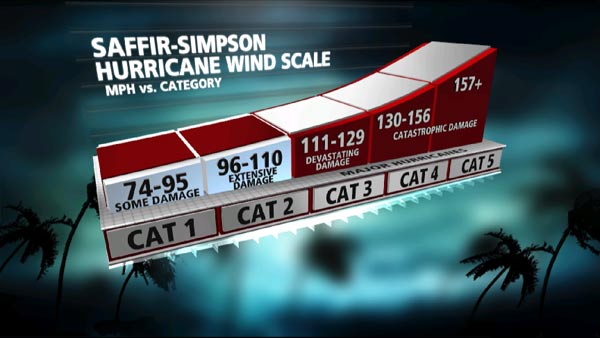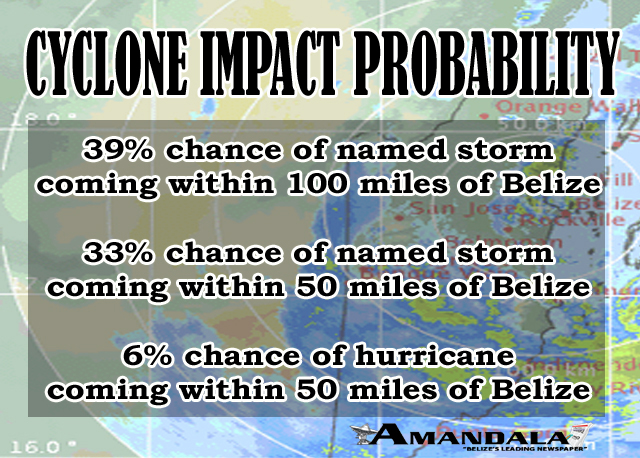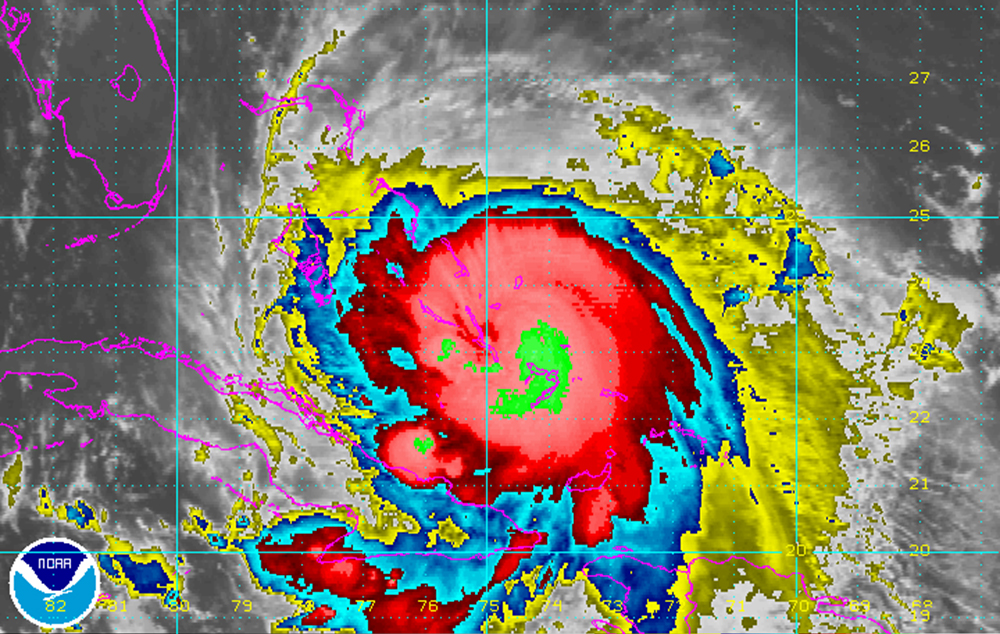BELIZE CITY, Thurs. Apr. 14, 2016–You might think that an April forecast for the Atlantic Hurricane Season, which spans June to November each year, is way too early, but that’s not the case, especially since hurricanes are not the straight-jacket type. Ask Hurricane Alex, which emerged as an extra-tropical cyclone near the Bahamas on January 7, 2016. Notably, Hurricane Alex was the first Atlantic hurricane in January since Alice in 1955.
So does an early hurricane make for a busy season? Not necessarily—or at least not according to today’s season prediction issued by the Colorado State University (CSU), which calls for at least one more hurricane to form during the 2016 hurricane season.
The Atlantic Basin Seasonal Hurricane Prediction issued today by Philip J. Klotzbach, Research Scientist, and William M. Gray, Professor Emeritus, at the Department of Atmospheric Science, Colorado State University, at the National Tropical Weather Conference, calls for 12 named storms, 5 hurricanes and 2 major hurricanes. The median for the period 1981 to 2010 is 12 named storms, 6.5 hurricanes and 2 major hurricanes. Major hurricanes are categories 3 to 5 on the Saffir Simpson scale, and they pack winds in excess of 110 miles per hour.

“We anticipate that the 2016 Atlantic basin hurricane season will have approximately average activity. The current weakening El Niño is likely to transition to either neutral or La Niña conditions by the peak of the Atlantic hurricane season,” the forecasters said.
They furthermore predict “a near-average probability for major hurricanes making landfall along the United States coastline and in the Caribbean.”
The PowerPoint presentation by Klotzbach and Gray indicates that there is a 49% chance that a hurricane will track within 100 miles of Florida contrasting with a 7% chance for New York; but that probability is 55% for Mexico, and 50% for the Bahamas and Cuba – the three countries outside of the US which would most likely be in the path of the season’s cyclones.
As for Belize, the published data indicates that there is a 33% chance that one or more named storms will track within 50 miles of Belize but only a 6% chance of a major hurricane coming that close. On the other hand, there is a 39% chance of a named storm coming within 100 miles of Belize, and an 18% chance that a hurricane would come that close.

Since the name Alex was already used for the hurricane which emerged this January, the next named storm would be Bonnie. The other names picked for the 2016 hurricane season are: Colin, Danielle, Earl, Fiona, Gaston, Hermine, Ian, Julia, Karl, Lisa, Matthew, Nicole, Otto, Paula, Richard, Shary, Tobias, Virginie and Walter.
“Coastal residents are reminded that it only takes one hurricane making landfall to make it an active season for them, and they need to prepare the same for every season, regardless of how much activity is predicted,” the CSU added.
It notes that the Atlantic basin—the area including the entire North Atlantic Ocean, the Caribbean Sea and the Gulf of Mexico—has the largest year-to-year variability of any of the global tropical cyclone basins.
“We issue these forecasts to satisfy the curiosity of the general public and to bring attention to the hurricane problem. There is a general interest in knowing what the odds are for an active or inactive season,” the CSU forecasters said.
We contacted the Belize Met Service for local information, but were told by an official that he was unable to provide comment today because they had not yet had a chance to review the 2016 Atlantic Hurricane Season forecast.

